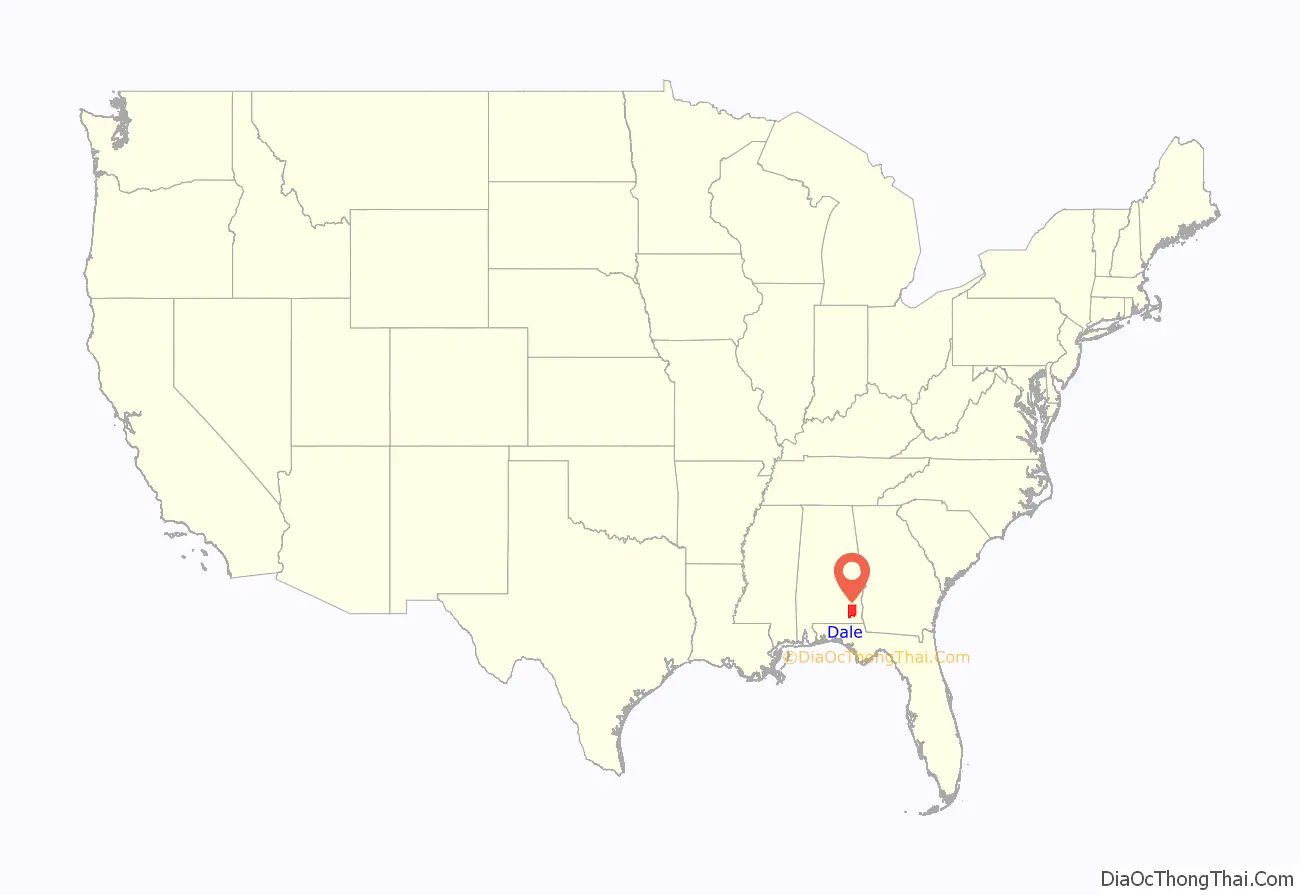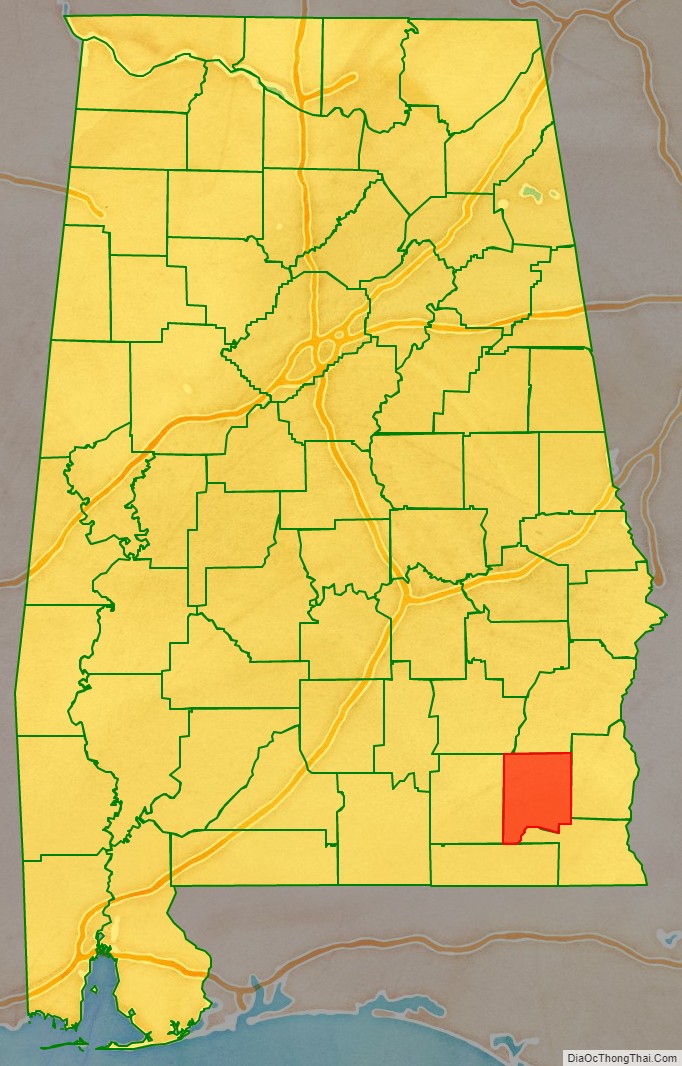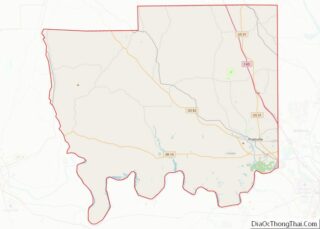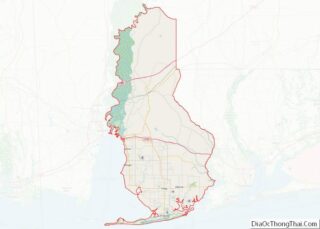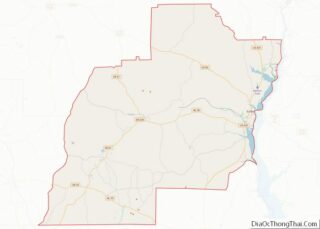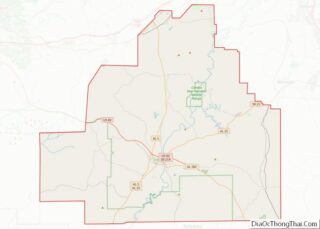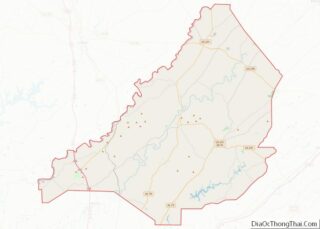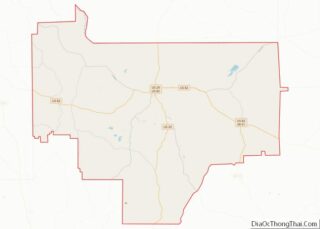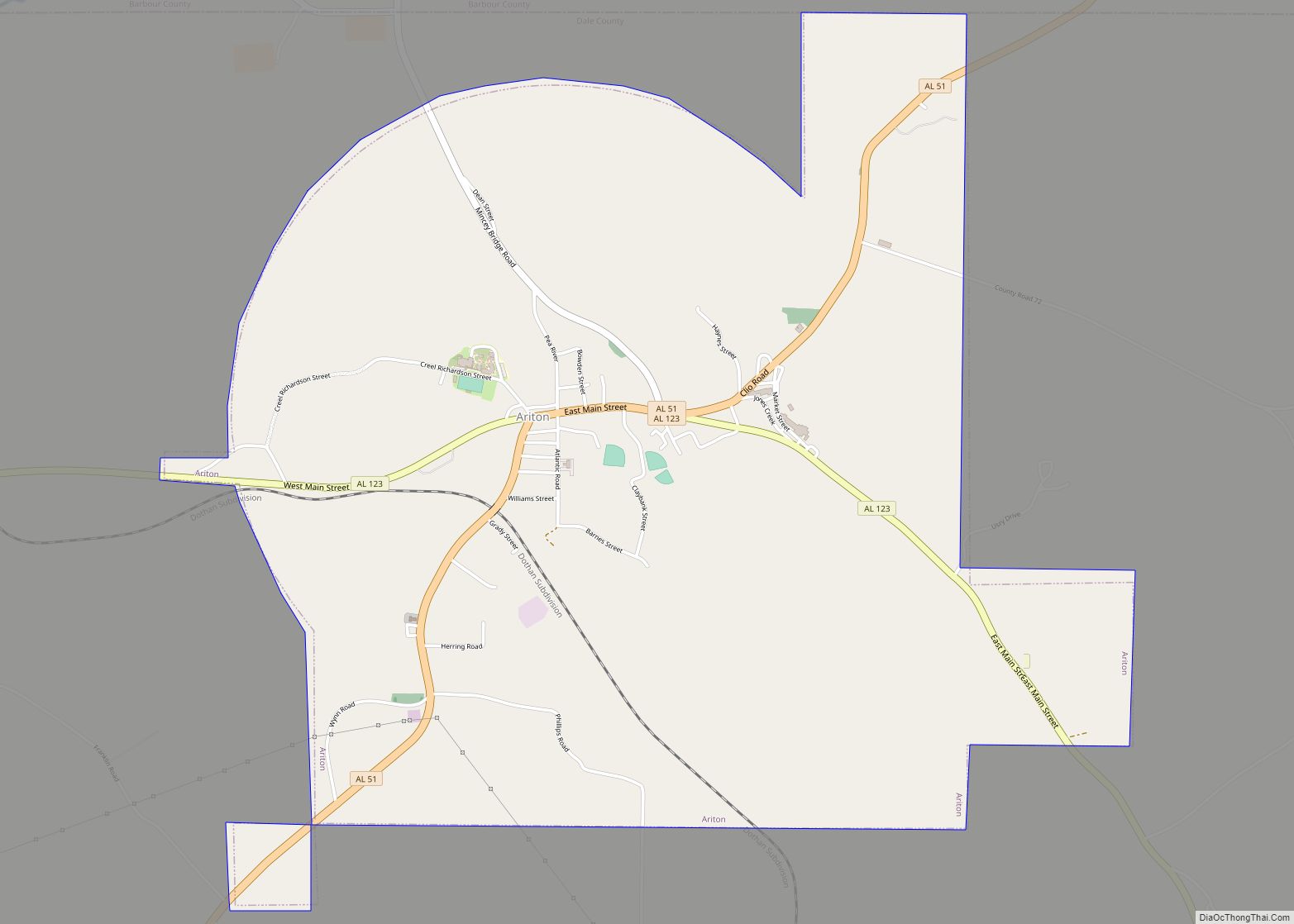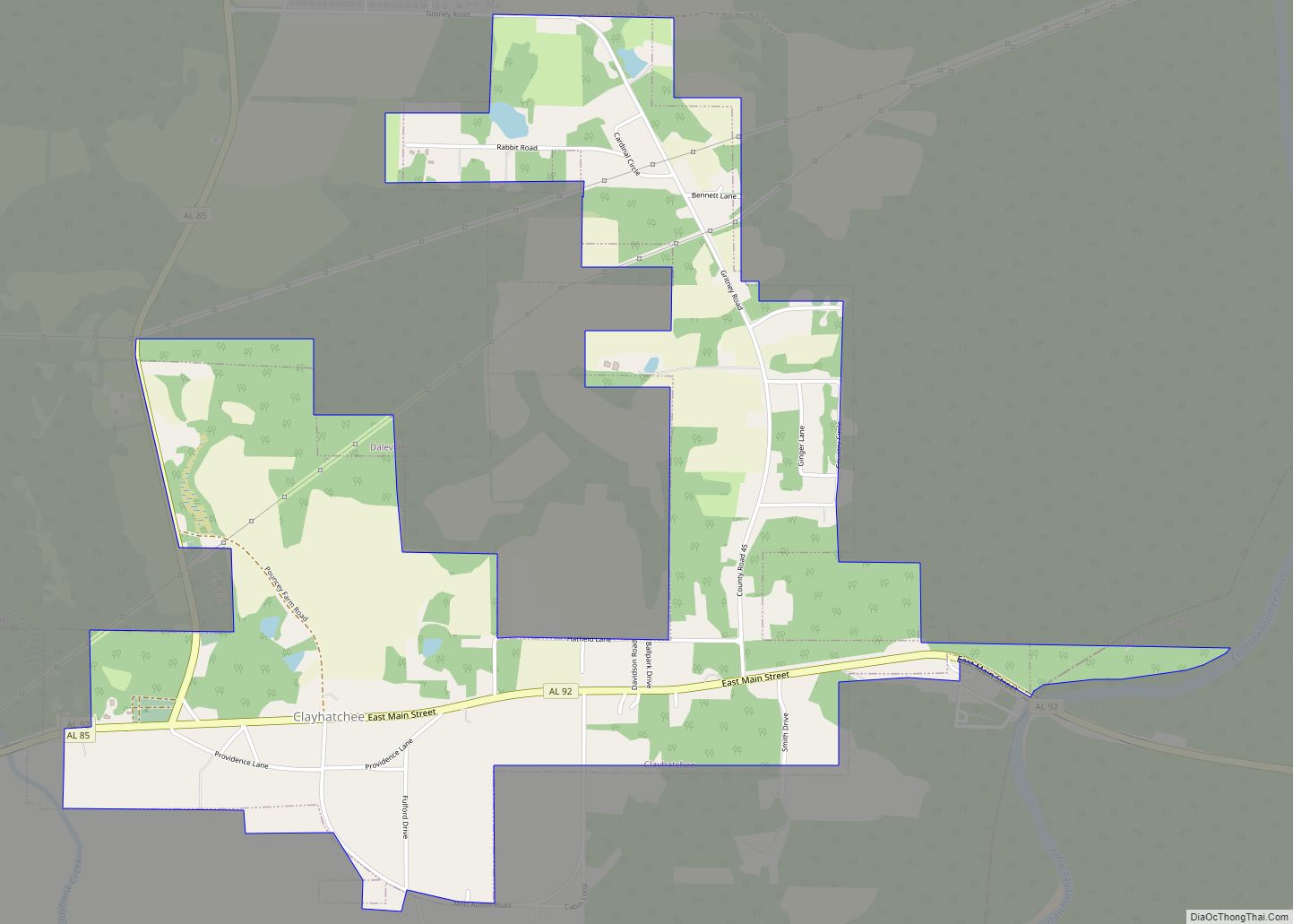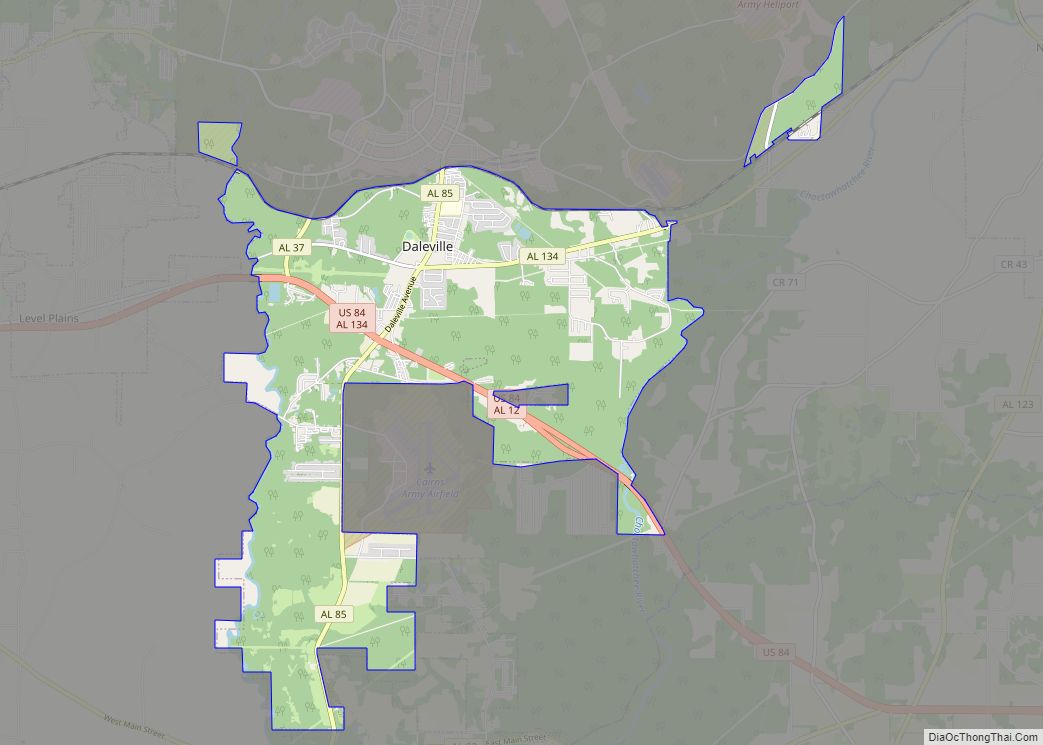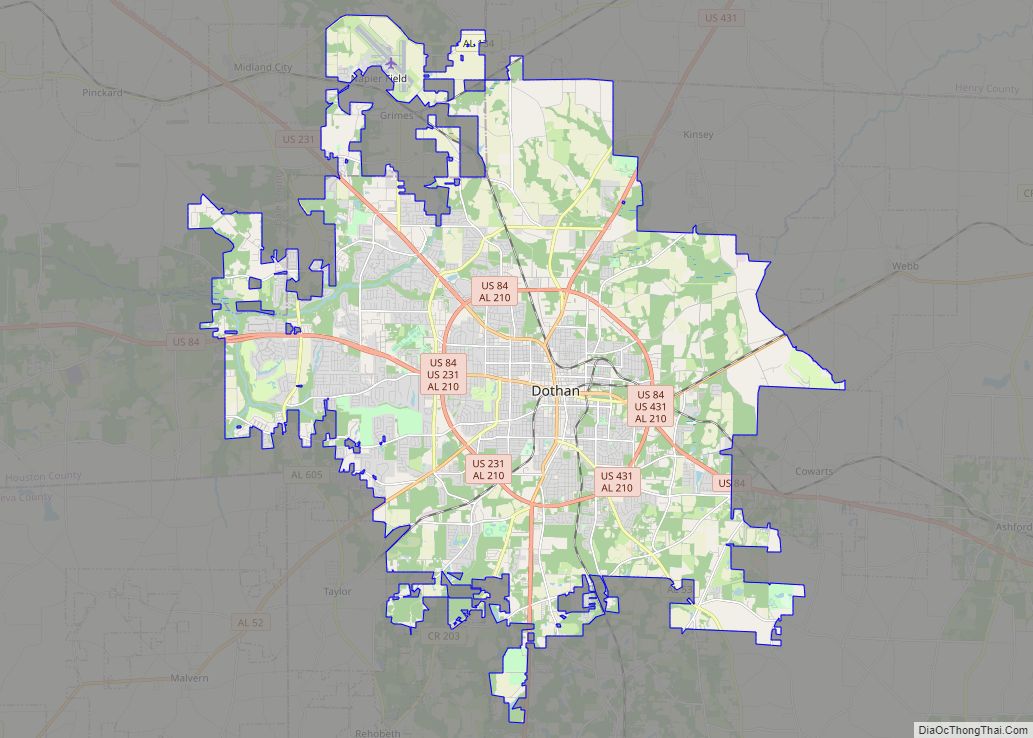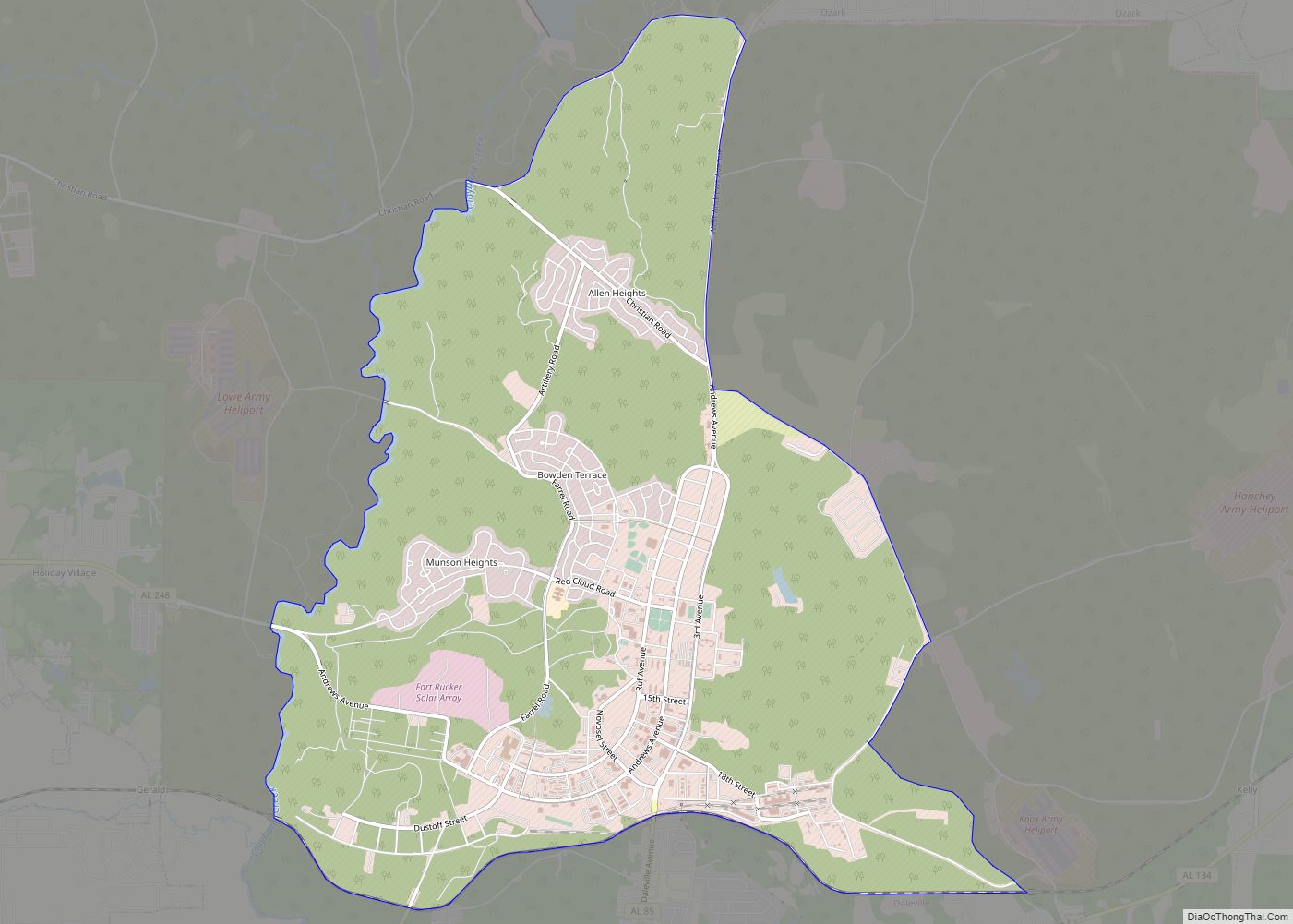Dale County is a county located in the southeastern part of the U.S. state of Alabama. As of the 2020 census the population was 49,326. Its county seat and largest city is Ozark. Its name is in honor of General Samuel Dale.
Dale County comprises the Ozark, AL Micropolitan Statistical Area, which is also included in the Dothan-Ozark, AL Combined Statistical Area. It was originally a part of Enterprise–Ozark micropolitan area before being split, and for a longer while was originally part of the Dothan-Enterprise-Ozark combined statistical area but Coffee County is now its own separate primary statistical area in later censuses.
The vast majority of Fort Rucker is located in Dale County.
| Name: | Dale County |
|---|---|
| FIPS code: | 01-045 |
| State: | Alabama |
| Founded: | December 22, 1824 |
| Named for: | Samuel Dale |
| Seat: | Ozark |
| Largest city: | Ozark |
| Total Area: | 563 sq mi (1,460 km²) |
| Land Area: | 561 sq mi (1,450 km²) |
| Total Population: | 49,326 |
| Population Density: | 88/sq mi (34/km²) |
| Time zone: | UTC−6 (Central) |
| Summer Time Zone (DST): | UTC−5 (CDT) |
| Website: | www.dalecountyal.org |
Dale County location map. Where is Dale County?
History
The area now known as Dale County was originally inhabited by members of the Creek Indian nation, who occupied all of southeastern Alabama during this period. Between the years of 1764 and 1783 this region fell under the jurisdiction of the colony of British West Florida. The county, together with the surrounding area, was ceded to the United States in the 1814 Treaty of Fort Jackson, ending the Creek Indian Wars. A blockhouse had been constructed during the conflict on the northwestern side of the Choctawhatchee River, and the first non-Indian residents of Dale County would be veterans who began to settle in the area around 1820.
Dale County was established on December 22, 1824. It originally included the whole of what is now Coffee County and Geneva County, together with the “panhandle” portion of Houston County. The original county seat was located at Dale’s Court House (now the town of Daleville), but when Coffee County split from Dale in 1841, the seat was moved to Newton. Here it remained until 1870 when, following a courthouse fire in 1869 and the formation of Geneva County (which took the southern third of Dale County), the county seat was moved to the town of Ozark, where it remains. In 1903 a small portion of the southeast part of Dale county was joined to the newly formed Houston County.
Portions of the 15th Regiment of Alabama Infantry, which served with great distinction throughout the U.S. Civil War, were recruited in Dale County, with all of Co. “E” and part of Co. “H” being composed of Dale County residents. This unit is most famous for being the regiment that confronted the 20th Maine on the Little Round Top during the Battle of Gettysburg on July 2, 1863. Despite several ferocious assaults, the 15th was ultimately unable to dislodge the Union troops, and was ultimately forced to retreat after a desperate bayonet charge led by the 20th Maine’s commander, Col. Joshua L. Chamberlain. This assault was vividly recreated in Ronald F. Maxwell’s 1993 film Gettysburg. The 15th would continue to serve until the final capitulation of Lee’s army at Appomattox Court House in 1865.
Another regiment recruited largely from Dale County was the 33rd Alabama; Companies B, G and I were recruited in the county, with Co. G coming from Daleville; Co. B from Newton, Skipperville, Clopton, Echo and Barnes Cross Roads; and Co. I from Newton, Haw Ridge, Rocky Head, Westville and Ozark. This regiment fought with great distinction in the Army of Tennessee, mostly under famed General Patrick Cleburne, once winning the Thanks of the Confederate Congress for its action at Ringgold Gap. The regiment was largely annihilated during the battles of Perryville and Franklin, but a few men survived and returned to Dale County after the war.
Dale County Road Map
Geography
According to the United States Census Bureau, the county has a total area of 563 square miles (1,460 km), of which 561 square miles (1,450 km) is land and 1.6 square miles (4.1 km) (0.3%) is water. The county is located in the Wiregrass region of southeast Alabama.
It is the fifth-smallest county in Alabama by land area and third-smallest by total area.
Major highways
- U.S. Highway 84
- U.S. Highway 231
- State Route 27
- State Route 51
- State Route 85
- State Route 92
- State Route 123
- State Route 134
- State Route 248
- State Route 249
Adjacent counties
- Pike County (northwest)
- Barbour County (north)
- Henry County (east)
- Houston County (southeast)
- Geneva County (southwest)
- Coffee County (west)
